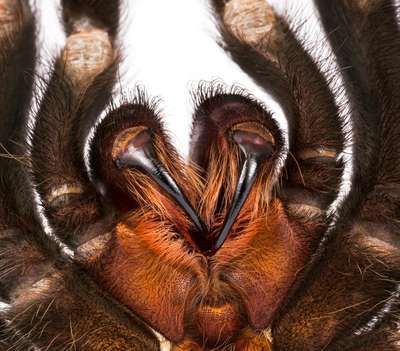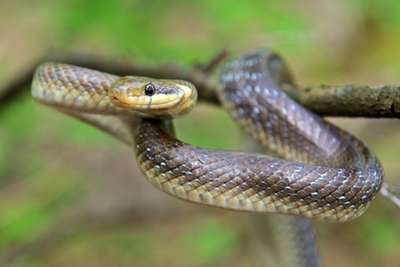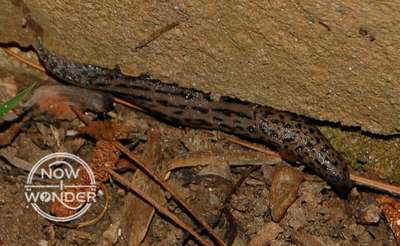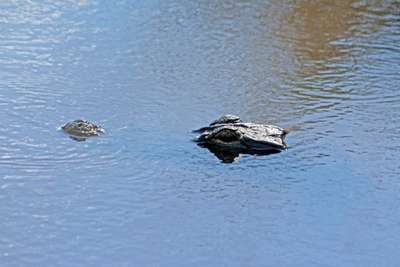Sleepy Orange butterflies (Eurema nicippe) are quick-flying orange butterflies found in sunny, low-lying areas of North Carolina. Members of the Sulphur subfamily, their underwings are unmarked except for a faint diagonal brown band. They are most abundant in NC during the hottest summer months.

Fun Facts About Sleepy Orange Butterflies to Wow Your Friends
My absolute favorite thing to do after I identify a butterfly is to learn everything I can about it.
Every species on earth is unique and has its own quirks, hidden talents, enemies, and friends. I call these special tidbits “fun facts” because that’s what they are to me.
Here are a few fun facts about Sleepy Orange butterflies that I hope you enjoy too!
- No one really agrees about the origin of this species common name “Sleepy Orange”. The “orange” part is obvious – the top surface of this species’ wings is a beautiful, bright yellow-orange color that practically glows in the sun. But why “sleepy”?
- Some people think the adjective refers to the small dark dash on the upper side of the butterfly’s forewings. I personally can’t see the resemblance personally, but some believe the marking looks like a closed, or “sleepy”, eye.
- Other people think the “sleepy” part of the common name refers to their strategy for surviving winter. Adult Sleepy Orange butterflies enter “reproductive diapause” to survive the winter (Daniels 2003).
- Reproductive diapause is a prolonged state of dormancy triggered by a combination of decreasing day length and decreasing temperatures. The environmental changes trigger hormonal changes in the butterflies’ bodies (Resh and Carde 2009) and essentially send them to “sleep”.
- A third theory is related to the lack of prominent hindwing eye spots as seen on other Sulphur species, like the Clouded Sulphur (Colias philodice).
- The absence of eye spots implies that the “eyes” are closed because the butterfly is sleepy (Glassberg 1999).
One thing is for sure- the name definitely doesn’t refer to the butterflies’ activity levels during the summer. Sleepy Oranges are one of the most active species you’ll see out in the wild. They zip around open, sunny meadows with rapid, darting flight. They perch only briefly to drink flower nectar or imbibe dissolved minerals from damp ground or mud puddles before they dart off again.
But fun facts are a whole lot more fun when you get to see the actual animal in real life. So read on to find out where, when, and how to find Sleepy Orange butterflies in North Carolina, and how to know you’re looking at the animal you think you are. You’ll be so glad you did!

How are Sleepy Orange Butterflies Classified?
| Kingdom | Animalia |
| Phylum | Arthropoda |
| Class | Insecta |
| Order | Lepidoptera |
| Family | Pieridae (“whites and sulphurs”, subfamily Coliadinae, “sulphurs”) |
| Genus species | Eurema nicippe |
How Do I Know I’m Looking At A Sleepy Orange Butterfly?
Appearance of Sleepy Orange Butterfly Eggs
Sleepy Orange butterfly eggs are white (Daniels 2003) and long and narrow (Pyle 1981). Females lay their eggs one at a time on the underside of host leaf plants.
Appearance of Sleepy Orange Butterfly Caterpillars / Larvae
Sleepy Orange caterpillars are pale, pastel green. A single, wide white side-stripe runs down their lengths, and their bodies are covered with fine setae that make them look covered in peach fuzz (Wagner 2005).
Their chrysalids are small and green to brownish-black. They bulge in the middle and are pointed at both ends. The head end of a chrysalis sticks to a leaf stem, then the bulk of the chrysalis leans away from the stem.
Appearance of Sleepy Orange Butterflies
Adult Sleepy Orange butterflies have wingspans up to about 2.0 inches (5.0 cm). Their bodies are the same color as their wings, which vary by season and sex but are always shades of orange.
The upper wing surfaces on both male and female Sleepy Orange butterflies are bright yellow to orange and rimmed in a wide black band. Male Sleepy Orange butterflies are a deep, bright orange and their black wing borders are unbroken. Female Sleepy Orange butterflies can be either orange or more yellow and their hindwings include a gap in the black wing border.
Both sexes have a single small black wing spot on each forewing.
The under side of their wings are usually darker than the upper surface. The forewings are orange but the hindwings can look almost brown, especially in the fall. For the most part, their wings are unmarked. The most distinctive field mark is a faint smudged line of brown that runs diagonally across the hind wing.
Sleepy Orange butterflies are common in North Carolina, but I’ve found that identifying them requires a process of elimination. Why?
First, North Carolina is home to many “orange” butterflies, mostly in the Sulphur subfamily Coliadinae, and many look a lot alike. With few exceptions, their wing markings tend to be subtle and the appearance of many individuals vary depending on sex and time of year, even within the same species.
Second, Sleepy Orange butterflies) usually close their wings when perched, which hides fully 50% of the field marks that one can use to identify a butterfly to species level. Obviously, they do display the upper surface of their wings when they fly but they fly fast and don’t glide very often. So, unless you have a camera set for fast shutter speed, you’ll have a hard time seeing the field marks on the upper wing surface out in the field.
Third, Sleepy Orange butterflies layer their forewings behind their hind wings when they perch. While the top edge of their forewings are visible over their hindwings, the position hides even more identifying field marks.
Fourth, the markings on Sleepy Orange hindwings are especially subtle, even for Sulphur butterflies. Rather than wing spots, which at least give you something prominent to assess, Sleepy Orange hindwings are decorated only with faint smudges.
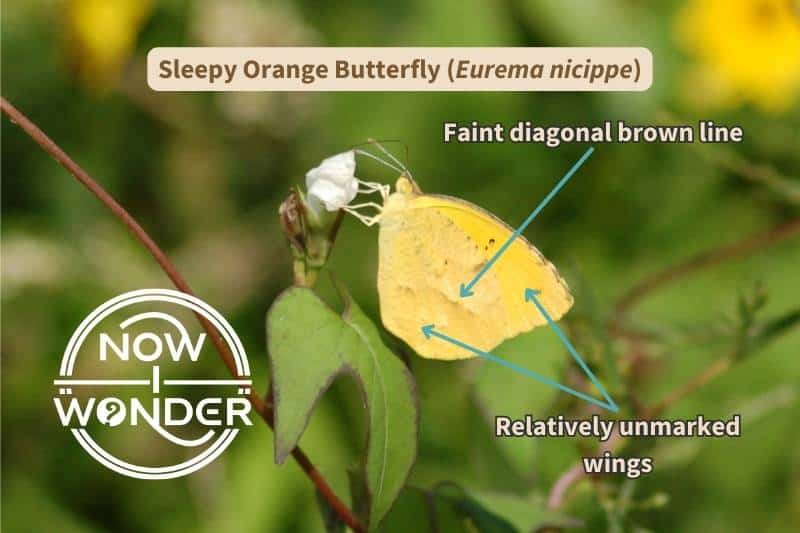
So, most of the time, you have to eliminate other Sulphur butterfly species based on the markings you don’t see. Luckily, the Sleepy Orange butterfly is the most widely distributed species and is common throughout North Carolina. Most of the other look-alike species are less common and found fewer places in the state. So, when confronted by a butterfly that doesn’t look like any other Sulphur butterfly, and looks like it could be a Sleepy Orange, it probably is.
When Can I Find Sleepy Orange Butterflies in North Carolina
Adult Sleepy Orange butterflies survive the winter months in North Carolina by entering “diapause”. But this species is intolerant of cold. They start emerging around the end of April but don’t become really common until the warmest months of the summer, usually late August through September.
Although not strongly migratory, Sleepy Orange butterflies do expand to the north during the summer months every year, sometimes reaching as far north as southern Connecticut. But because they can’t tolerate cold, their range contracts southerly starting in early autumn. So, a few of the butterflies that you might see in a North Carolina meadow in late September might have spent the hottest part of the summer in New Jersey.
Where Should I Look To Find Sleepy Orange Butterflies in North Carolina
Sleepy Orange butterflies are resident year-round in the Piedmont Look for Sleepy Orange butterflies anywhere in North Carolina that is sunny, open, and has lots of flowering plants. Common areas that meet these criteria include:
- old farm fields
- weedy meadows
- home gardens
- the edges of forests, especially open pine woods
- along streams and rivers.
Sleepy Orange butterflies seem to be especially fond of disturbed areas that are also low-lying.
Sleepy Orange butterflies are very active on warm days. Look for bright yellow to orange butterflies that zip from flower to flower with a quick, darting flight and only stay perched for a few seconds. Adults drink nectar from a wide variety of flowers but seem especially fond of the nectar from tickseeds and thistles (Gettler, 2017). Both types of plants are classified in the Aster family Asteraceae.
Sleepy Orange butterflies drink up and move on at a fast pace, so you have to be quick to glimpse them at rest.
The one situation when Sleepy Orange butterflies might perch for longer than usual is when they “mud-puddle”. Mud-puddling (sometimes called just “puddling”) is a behavior that many butterfly species engage in to obtain important mineral salts- especially sodium- that they need to function properly.
Sodium is a common element found in soil and rocks and dissolves in water. Sleepy Oranges will often land on or at the edge of mud puddles and use their long probosces to suck up the dissolved minerals.
Male butterflies puddle more often than females, because they need to replace the sodium they lose when they pass a packet of sperm to females during mating.
Many different butterfly species may gather at the same puddle, or patch of damp ground, so look for Sleepy Oranges amidst other puddling butterflies, like Eastern Tailed-blues (Everes comyntas), Pearl Crescents (Phyciodes tharos), Horace’s Duskywings (Erynnis horatius), and especially Eastern Tiger Swallowtails (Papilio glaucus).
What Do Sleepy Orange Butterflies Eat?
Sleepy Orange butterfly caterpillars feed only on plants in the Pea family Fabaceae, with Wild Senna (Senna hebecarpa) being a particular favorite. They will also eat other North Carolina plants in this family, including Clovers (Pyle 1981) and partridge pea (Chamaecrista fasciculata) (Gettler 2017).
But Wild Senna is their top choice.
Adult Sleepy Orange butterflies drink nectar from a wide variety of flowers but are especially fond of nectar from plants in the aster family Asteraceae, like tickseed (Coreopsis lanceolata) and thistles (Cirsium spp) (Gettler 2017).
References
Daniels, Jaret C. 2003. Butterflies of the Carolinas. Cambridge, MN: Adventure Publications, Inc.
Gettler, Erin. 2017. Bird Watcher’s Digest Butterflies Backyard Guide : Identify, Watch, Attract, Nurture, Save. Laguna Hills: Quarto Publishing Group USA. \
Glassberg, Jeffrey. 1999. Butterflies Through Binoculars: The East. New York, NY: Oxford University Press.
Pyle, Robert Michael. 1981. National Audubon Society Field Guide to Butterflies: North America. New York, NY: Alfred A. Knopf.
Resh, Vincent H., and Cardé, Ring T., eds. 2009. Encyclopedia of Insects. San Diego: Elsevier Science & Technology.
Wagner, David L. 2005. Princeton Field Guides: Caterpillars of Eastern North America. Princeton, NJ: Princeton University Press.

